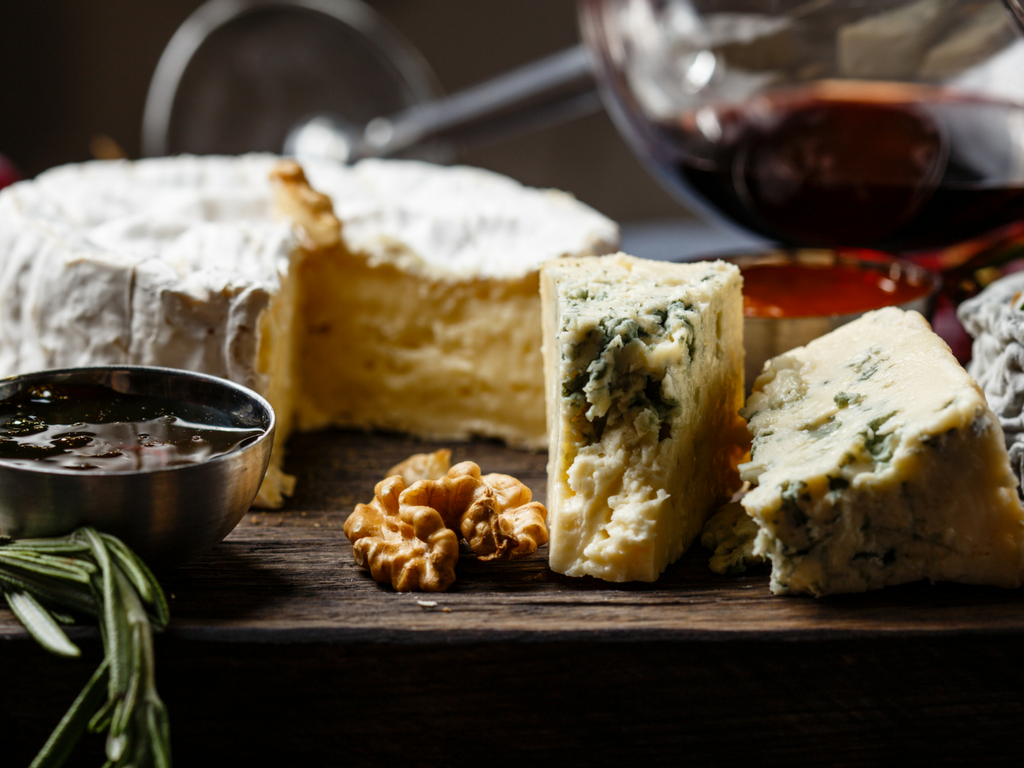
If you build it, they will come...and thoroughly enjoy themselves! A good cheese plate or platter is all about variety—texture, flavour and accompaniments. Here's a handy-dandy cheat sheet for the perfect cheese plate:
Choose your cheeses
Aged, firm, soft and blue are your standard cheese categories—select one of each. If you're primarily serving cheese, you'll want about 1.5 kg for every three people.
Aged: Aged Cheddar, cave-aged Gruyere, Comte, goat Gouda
Firm: Manchego, Mimolette, Parmigiano-Reggiano
Soft: Brie, Camembert, Chevre
Blue: Gorgonzola, Cambozola, Stilton, Roquefort
Accompaniments
Again, you want to offer a variety here. It can be as simple as salty and sweet condiments and a basket of mixed bread. Or you can add cured meats, dried fruit and nuts. Here are a few suggestions:
- Preserves: chutney, jelly, jam or quince paste
- Pickled vegetables: olives, onions, carrots, beans, turnip etc—a mix of sweet & tart pickles
- Meats: prosciutto, salami and other cured meats
- Fruit: dried fruits or fresh seasonal fruit like grapes or pomegranate seeds
- Nuts: a mix of sugar-coated and salty spiced nuts
- Bread basket: sliced baguette and crackers
- If you're serving wine, have a selection of red and whites that complement the flavours of your cheese. Do some reading about your cheese choices and consult your cheesemonger and wine seller.
How to Serve
Now that you've chosen what you want to serve, it's time to put it all together.
- Allow the cheese time to breathe and come to room temperature. Removing cheese from the fridge an hour before serving will do
- Label each cheese and include its country of origin.
- Plate the really stinky cheeses separately so as not to overpower more the more delicate options. Place cheese on boards or serving platters. Have a knife for each cheese.
- Cluster bowls and plates of accompaniments around the cheese to allow guests easy access.
- Depending on the consistency of your accompaniments, have small plates for guests or paper napkins.
Bon appetit!
